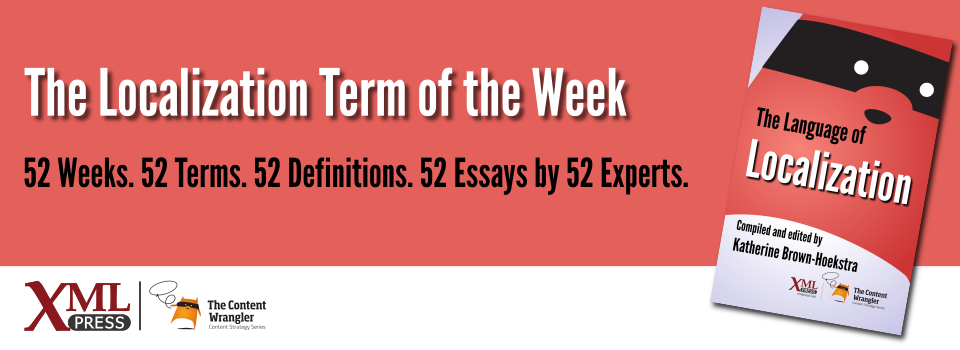What is it?
The process of re-developing or adapting content from one culture to another, while transferring its meaning and maintaining its intent, style, and voice.
Why is it important?
In transcreation, the concepts, feelings, and call to action that are expressed in the source are maintained in the target, but the emphasis, design, and the text are oriented specifically to the target culture. While there are some grey areas, transcreation goes much deeper than localization typically does and, consequently, incurs significantly higher costs.
Why does a technical communicator need to know this?
The concept of transcreation is relatively new. Although transcreation is often referred to as a process for marketing content, you can transcreate many types of message.
Essentially a content creation process, transcreation requires skills that go beyond language and culture, such as the capacity to relate to the target audience and to create content that establishes trust and motivates the audience to take action. Transcreation often depends less on the source text than traditional translation because each regional version might require the creation of new images, storylines, and copy.
Successful transcreation must be an integral part of the content creation process, not an afterthought. It requires the following elements:
- knowledge of the intent, messaging, tone, and style to be conveyed (e.g., a creative brief or regulatory summary)
- deep understanding of the target market’s culture, idioms, and preferences
- budget and schedule to support the task in all the markets where it is needed
It is crucial that the transcreation teams truly understand the concept and emotional intent of the message so that they can successfully transfer the intent globally. Transcreation is not something to be rushed through; all the right elements must be created to support the full intent of the message[Väisänen 2017].
Because translation, localization, and transcreation are separate but related processes, it is important to be aware of when to apply which process to what type of content. In addition, the transcreation of branding and marketing content should always be tested and vetted in every market where it will be used[Humphrey][Ray 2010][Safar 2013].
References
- [Väisänen 2017] 10 Tips on Transcreation: Väisänen, Mikko. (2017) GALA blog post about best practices for transcreation.
- [Humphrey] The Little Book of Transcreation: Humphrey, L., et al. A book that explains transcreation and how it is used. NOTE: site currently under construction.
- [Ray 2010] Reaching New Audiences Through Transcreation: Ray, Rebecca and Nataly Kelly. (2010) PDF. Common Sense Advisory report on transcreation.
- [Safar 2013] A Buyer’s Guide to Transcreation: Safar, Libor. (2013) Moravia blog post about how to make a buying decision for transcreation.

